Peter Wolf
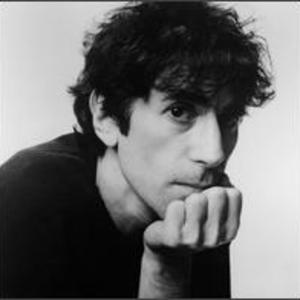
- Genre:
- Pop/Rock
- Meta styles:
- Hard Rock, Pop/Rock, Rock & Roll/Roots
- Styles:
- Album Rock, Contemporary Pop/Rock, Rock & Roll
There is more than one artist by the name of Peter Wolf: 1) American lead singer of The J. Geils Band from 1967 to 1982 and subsequently a solo artist; 2) Austrian composer, songwriter and producer (1) American Peter Wolf, born Peter Blankfeld, was the lead singer of J. Geils Band from 1967 to 1982 and is currently a solo artist, his most recent release in April 2010, "Midnight Souvenirs." (Peter Wolf's Historical Biography was written & researched by Bryan Wiser, and Sheila Warren with Mimi Fox): born in New York City...
1) American lead singer of The J. Geils Band from 1967 to 1982 and subsequently a solo artist;
2) Austrian composer, songwriter and producer
(1) American Peter Wolf, born Peter Blankfeld, was the lead singer of J. Geils Band from 1967 to 1982 and is currently a solo artist, his most recent release in April 2010, "Midnight Souvenirs."
(Peter Wolf's Historical Biography was written & researched by Bryan Wiser, and Sheila Warren with Mimi Fox): born in New York City, Peter grew up in the Bronx during the mid-1950's in a small, three-room apartment where he lived with his parents, older sister, two cats, dog and parakeet.
For some time, Peter lived with his grandmother, an actress in New York City's Yiddish Theater. She and Peter had a strong bond, and she affectionately named him "Little Wolf" for his energetic and rambunctious ways.
His father was a musician, vaudevillian and singer of light opera. Like Peter did years later, his father left home at age fourteen to join the Schubert Theater Touring Company with which he traveled the country performing light operas such as The Student Prince and Merry Widow. He had his own radio show called The Boy Baritone, which featured new songs from Tin Pan Alley, and was a member of the Robert Shaw Chorale. As a result of such artistic pursuits, Peter's father underwent long periods of unemployment that created a struggle to make financial ends meet.
Peter's mother was an elegant and attractive woman who taught inner-city children in the South Bronx for 27 years. A political activist, union organizer and staunch civil rights advocate, she supported racial equality by attending many of the southern "freedom rides" and marches.
Peter's older sister was also a teacher as well as a photographer who now works as an advocate for persons with disabilities. She continues her mother's tradition, often marching on Washington to support the rights of the disabled. As a teenager, she was a dancer on DJ Alan Freed's famous rock 'n' roll television show The Big Beat. She brought Peter to his first concert, which featured Chuck Berry, Jerry Lee Lewis, Little Richard, Frankie Lymon and the Teenagers, the Chantels, Screamin' Jay Hawkins, Ed Townsend, Buddy Holly, Jo Ann Campbell and Big Jay McNeely. The performers had a lasting influence on Peter.
Growing up, music continually filled the household. With his father, Peter attended many classical chamber concerts and early live bebop performances, as well as concerts by the folk group The Weavers. He took part in a series for children with Woody Guthrie at the Little Red Schoolhouse. Woody Guthrie's Songs To Grow On was the first record Peter owned.
As a child, Peter listened to the radio constantly, often taking it to bed with him and hiding it under the blankets, scanning the dial until dawn. His radio picked up Wheeling, West Virginia station WWVA, which broadcasted every Friday and Saturday nights a live country jamboree featuring the original Stanley Brothers, one of the great bluegrass groups. Through the years, Peter was influenced greatly by radio. Some of the DJs who affected him most were Alan Freed, Jocko Henderson, the Magnificent Montague and Symphony Sid. In fact, Peter later dedicated his first solo record to these DJs.
Peter was first exposed to the sounds of doo-wop by his older sister and the local groups that sang on street corners throughout the Bronx. By the age of 11, Peter started frequenting the legendary Times Square Midtown Manhattan Record Shop, which helped define New York's doo-wop sound. There he met record lovers from all over the city and other young disciples of rock 'n' roll. Many of the top doo-wop groups performed acappella in the back of the store and the shows were often broadcasted on the radio.
Peter attempted to study piano and guitar but his dyslexia, which went undiagnosed in those years, made the instruments difficult and frustrating to learn. At his father's suggestion, he began taking violin lessons. His teacher's apartment was on the first floor of the building, and his friends would gather outside the window to tease and distract him. Needless to say, those lessons did not last long.
Peter's first public appearance was with an almost accapella group called The Three Imps (they were accompanied by a clarinet player). They performed at a Bronx Park talent contest and sang the Everly Brothers' hit "Bye Bye Love."
During elementary and junior high schools, Peter entered a special music program and became the drummer for the school's orchestra. However, the teacher decided he played too loud and wildly, so he was taken off the drums and transferred to the cymbals, and later the triangle, the quietest instrument.
When Peter was seven, his father began working the Tanglewood Music Festival, and the family moved near the town of Sturbridge, Massachusetts. So that his father could do chores, Peter would spend afternoons at the studio of a local painter, Norman Rockwell.
Peter had always had an interest in art. Since the age of two and one half, he drew constantly. His family couldn't supply enough paper, and neighbors would contribute large stacks. Peter would still draw on anything he could find, marking nearly every surface in the apartment.
Peter's interest in art ensued, and he attended art programs offered to talented inner-city children. At the age of nine, he was accepted to the Museum of Modern Art Special Art Development program. Just before high school, while attending one of the many summer art programs, Peter met a stunning young lady, Edie Marie, who became one of the great loves of his life. Edie lived in a low-income housing project near Peter's neighborhood, and they became inseparable. Together, Peter and Edie attended the High School of Music and Art, and both studied painting.
At the age of 14 and one half, Peter moved from his family's Bronx apartment to a painting studio in Manhattan that he shared with several friends. During this period, Peter frequented Birdland, the renowned jazz capital of the world, as well as the acclaimed Five Spot and Village Vangard. There he saw jazz greats Art Blakey, Jimmy Smith, Cannonball Adderley, John Coltrane, Miles Davis, Thelonius Monk and Charles Mingus.
During one of his many painting marathons, Peter heard an interview with a young folk singer who had recently moved to New York. He called the radio station to ask about the performer, and the show's moderator connected Peter with his guest, Bob Dylan. After the brief conversation, Peter, with paintings in hand, went to meet the young folk singer at his Greenwich Village apartment. Bob wasn't at the apartment, but was holding court with friends at a local bar, The Kettle of Fish. Peter eventually found him at the MacDougal Street bar. In subsequent years, Peter attended many of Bob's early and greatest performances.
Peter's high school was located in Harlem, only a few blocks from the legendary Apollo Theater. Peter attended the theater religiously and developed a love of soul music. He saw an endless list of soul and jazz legends such as James Brown, Jackie Wilson, Billy Stewart, Dinah Washington and Ray Charles, all of whom had a profound affect on his musical development and, later, his stage persona.
Interested in visiting friends involved in the folk music scenes, Peter began hitchhiking across the country and visited Chicago and later, his sister at the University of Wisconsin. Peter hung out at different college campuses, pretending he was a student so that he could use the school's art facilities. While living in Chicago, he was accepted to Boston's Museum School of Fine Arts and he hitchhiked to New England, where he spent several days living in cheap hotels.
During a visit to Brandeis University, he met and befriended student and musician Jon Landau, who later became an influential writer for Rolling Stone magazine, a record producer and Bruce Springsteen's manager. One day while searching for an apartment, Peter met another student who was looking for a roommate. Peter and that student, filmmaker David Lynch, became roommates.
One night, Peter went to a loft party that was attended by many painters and musicians. A band was performing, but its members had a little too much to drink and the singer couldn't remember the lyrics to the song "There's A Man Down There," by G. L. Crockett. Though he had drunk several glasses of wine himself, Peter jumped in and helped the band finish the song.
Performing at this party was a revelation for Peter. The experience was so powerful that he became completely consumed with the idea of joining this band. After much persistence, Peter became a member and, eventually, the band's lead singer. They all dropped out of art school to devote themselves completely to the band and rehearsed constantly. They called themselves the Hallucinations and became one of the most popular young groups in New England. They soon became drenched in early rock, R&B and Chicago Blues.
During this period, Peter became interested in Chicago blues. One night, he went to see John Lee Hooker perform at a coffee house and was shocked to find the club nearly empty. He went backstage to talk with him and tried to convince John Lee that if he let Peter's band join him on the bill, they could help fill the room. Hooker agreed, and Peter's group became the opening act, paving the way for a long friendship.
A newly formed band, the Paul Butterfield Blues Band, was spending a lot of time in the Boston area. Along with guitar great Michael Bloomfield, they used the Hallucination's rehearsal loft to put together their second album, East West.
Peter's Cambridge apartment was just a few blocks away from the celebrated Club 47, which showcased great performers such as Muddy Waters, Howlin' Wolf, Junior Wells, Son House, Bill Monroe and Skip James. The club's dressing room was so small that Peter invited many of the performers to use his nearby apartment between sets. During this period, Peter had befriended Muddy Waters and became his unofficial valet when Muddy was in Boston. Many members of Muddy's band would stay at Peter's apartment when playing in New England.
In addition to playing with Muddy Waters, Junior Wells and Howlin' Wolf, the Hallucinations also toured with bands such as the Velvet Underground, Sun Ra, the Lovin' Spoonful, the Young Rascals, the Byrds and the Shirelles. They also became the house band at the famed Boston Tea Party club, which featured the first American appearances of groups such as Led Zeppelin, Traffic, the Who, Jeff Beck Group and Fleetwood Mac.
Peter became close friends with musician Barry Tashian, the leader of the Boston group, the Remains, an extremely influential band throughout New England. They toured the United States with The Beatles and were part of the Beatles' final American tour in 1966, which included the famed Shea Stadium concert. For a short time, Barry and Peter were roommates, and Barry helped influence Peter's musical career. Barry later went on to play with Emmylou Harris and Gram Parsons, who at the time was attending Harvard University. Gram later recorded J. Geils' song, "Cry One More Time," for his album Grievous Angel.
After the bars would close, many musicians would go to Peter's apartment and jam all night long. An eccentric Harvard University law student from Kansas City named Ray Riepen, who always sported a three-piece, pinstriped, Brooks Brothers' suit, frequented these sessions and often ended up passed out on Peter's couch. One day, he asked Peter to join him in a venture to buy an FM radio station WBCN in Boston. Peter, having no money and little entrepreneurial sense, passed on the offer and instead volunteered to help organize the programming.
Peter became the station's music and program director as well as its late night, fast-talking Disc Jockey, the "Wolfa Goofa Mama Toofa." He created a program that fused rare rock 'n' roll with rhythm 'n' blues. The show, influenced by many of the R&B DJs he heard growing up in New York, became extremely popular, not only with the general radio audience, but also as a resource for musicians in New England.
Peter interviewed many artists on the show, including John Lee Hooker, Carla Thomas, Howlin' Wolf, Mose Allison, Roland Kirk, Jeff Beck, Rod Stewart and a young Irishman who had recently moved to town, Van Morrison. Peter and Van became close friends and spent many sleepless nights listening to their favorite records and playing together at the same clubs.
In 1967, several members of the Hallucinations began to pursue other artistic interests, leaving Peter bandless. In his search for new musicians to play with, Peter attended an open mike night at a Boston coffeehouse where he met J. Geils, Magic Dick, and D. K.. Together, with Stephen, former Hallucinations drummer, they decided to form a band. At the time, guitar player J. Geils was under an exclusive management contract. The manager, to protect his interests, would not allow Peter and J. Geils play together unless the group was called the J. Geils Band.
The band moved to Montreal, where they learned obscure blues and R&B material, mainly from Pete's vast record collection. When they finally returned to Boston, the J. Geils Band immediately became a popular local favorite.
A year later, Mario Medious, a hip, south side Chicago, fast-talking promotion man for Atlantic Records, was visiting Boston with Dr. John. While attending a show at the Boston Tea Party, Mario heard the J. Geils Band from the back room. He assumed they were a south side Chicago blues band and went backstage to introduce himself.
To his surprise, Mario found five young, white musicians from Boston. Instantaneously impressed, he called his boss, Jerry Wexler, then co-owner and Vice President of Atlantic Records. The next week, Peter and his friend Jon Landau met with Jerry Wexler in New York. In 1968, with the approval of saxophone legend King Curtis, the band was signed to Atlantic Records.
Wexler asked Landau, who had just produced a record for the MC5 in Detroit, to explore what the J. Geils Band sounded like in the studio. After a week, they all agreed they needed more time before recording an album.
Back in Boston, the Geils band set up home base at a basement club underneath several pool parlors called the Catacombs. The club offered a unique roster of artists such as John Lee Hooker, James Cotton, Billy Boy Arnold and Pharaoh Sanders. It was also the place where Van Morrison debuted the songs he eventually recorded for his classic album, Astral Weeks.
Seth Justman, a young Boston University student and musician from Washington, D.C., became a frequent visitor to the Catacombs. After much persistence, he eventually became the final member of the J. Geils Band.
After Seth's first performance with the band, it was decided that Peter's unconventional vocal style and frenetic stage performance might be an illogical hindrance rather than an asset. Much to Seth's surprise, the other members thought it would be best for Peter to leave the group and drummer Steven Bladd became the new lead singer. Several weeks later, they asked Peter to return. Seth and Peter cultivated a strong friendship, and shared many musical interests and became the band's song writing team.
The J. Geils Band established a reputation for their exciting live performances and built a large following in New England. This grassroots enthusiasm reached the ear of legendary rock promoter Bill Graham, and he invited them, sight unseen, to perform at his famed Fillmore East, a concert hall. After the band received five encores, Bill immediately booked them again and asked them to appear at the Fillmore West in San Francisco. This started the band's long journey outside of Boston and began to expose them to a national audience. Peter not only functioned as the band's lead singer, but also handled its business affairs.
In 1970, the band released their first recording the J. Geils Band. They toured non-stop, building a fan base in every city they played. Soon, they appeared on television for the first time on Dick Clark's American Bandstand.
Peter and Bill Graham remained close friends for the next two decades. Years later, after Graham tragically died in a helicopter crash, Peter was asked to record the audio version of his autobiography, Bill Graham Presents.
Later that year, the band signed with Frank Barsalona's Premier Talent, which at the time was the world's most prestigious booking agent for rock artists. After several years touring the states, music industry veteran Dee Anthony became their manager.
Anthony felt their studio albums lacked the excitement of their live shows and encouraged the band to record a live album. In 1973, the album Full House was recorded in Detroit and became one of the band's most sucessful and critically praised albums. The album captured the raw energy that became the trademark of the band's popularity and is considered one of the most exciting "live" rock recordings.
After several European tours, the band returned to the United States where they traveled endlessly. While away on tour, Peter received devastating news that his girlfriend and high school sweetheart, Edie, had been killed in a car accident.
Years later, while performing at the Fillmore West in San Francisco, a friend introduced Peter to actress Faye Dunaway. A strong friendship evolved and, after a whirlwind courtship, they married. Their lives were filled with countless adventures in the worlds of Hollywood and rock 'n' roll. After four years, the constant travel and separation took its toll on the relationship, and they divorced.
Edie's death and his divorce from Faye, along with the band's increasing financial debt, made for rocky times for Peter. The band ended their working relationship with Dee Anthony, and Peter once again assumed the managerial role for the band. In 1978, after their contract with Atlantic expired, Peter was able to help get the band signed to a new record label, EMI America.
The company provided hope and energy for the financially distressed and road weary band. They recorded a series of albums, each one further expanding their popularity. Their first release on EMI America was Sanctuary in 1978, followed by Love Stinks in 1980.
In the new decade, the fast-paced lifestyle began to exhaust some of the group's members. Ironically, in 1981, during the making of what later became their greatest commercial success, Freeze Frame, some of the members expressed a desire to leave the band. But with the release of Freeze Frame, the advent of MTV, and a worldwide tour with the Rolling Stones, the J. Geils Band finally achieved international acclaim and became known as one of America's great rock 'n' roll bands. During their own headlining tour, one of their opening acts was U2, who were just beginning to gain recognition.
For the first time in more than 12 years, the band was finally out of debt and filling arenas and stadiums as headliners. Just when they seemed to achieve everything they had worked so hard for, artistic differences between Peter and Seth became more divisive. Seth disbanded their collaborative team and began working independently. The tension continued to build. Peter presented the band with many songs that were rejected. They felt his material was too roots and R&B-based and wanted to move in the Pop direction that Seth was leaning towards. Ultimately, the band decided to continue without Peter's involvement. After 17 years with no personnel changes, Peter was gone and Seth became the band's new lead singer.
Peter turned the materials he had written for the J. Geils Band into his first solo effort Lights Out, which was released in 1984.
Peter put together an eclectic ensemble to create the record. The album was engineered by Ed Stasium, who produced most of the Ramones' recordings. The musicians involved ranged from hiphop pioneers to marquee name rockers, including, Mick Jagger, Elliot Easton of the Cars, Adrian Belew, G.E. Smith, members of the P-Funk Horns, Yogi Horton, Maurice Starr, and Michael Jonzun, leader of the Jonzun Crew. The album received great critical acclaim. The top charting single, "Lights Out," was a product of Peter's collaboration with one of his favorite songwriters, Don Covay. In addition to recording albums of his own, Don penned hits such as Aretha Franklin's "Chain of Fools," "Mercy Mercy" which was recorded by the Rolling Stones, and many songs recorded by Otis Redding and Wilson Pickett.
In 1985, Peter recorded a duet with Aretha Franklin that featured Carlos Santana on guitar. The song, "Push," was featured on Aretha's Arista album, Who's Zoomin' Who?
In 1987, Peter returned to a small group ensemble and recorded his next release, Come As You Are, on EMI America. (The video of the same name received many awards.) Recorded live, this album returned to a more basic rock edge. Eric "E.T." Thorngren, who worked with Talking Heads, Robert Palmer and Grandmaster Flash, helped Peter produce the album.
Later that year, Peter took part in the making of the anti-apartheid project Ain't Gonna Play Sun City. Spearheaded by rocker Steve "Little Steve" Van Zandt, the project united R&B, hiphop, punk rock, and hard rock, and included artists such as Bono, Joey Ramone, Eddie Kendricks, Jimmy Ruffin, Bruce Springstein and Lou Reed. Many also participated in a video directed by Jonathan Demme. The project had a street vibe and strong political ambitions, both of which contributed to its character and success.
In 1990, Peter recorded his next album, Up To No Good, on MCA records. He recorded the entire album in Nashville with a songwriting team comprised of Taylor Rhodes and Robert White Johnson. While in Nashville, he met and began working with Will Jennings, who remains an important friend and collaborator. Will has achieved one of the broadest ranges in contemporary music, having collaborated on "Tears In Heaven" with Eric Clapton, "Higher Love" with Steve Winwood, The Crusaders' "Street Life," and many albums for B.B. King.
Peter's 1996 release, Long Line (on the Reprise label), was co-produced with musician friends Stu Kimball and Johnny A. For the recording, Peter returned to Longview Studios where J. Geils had recorded many of their albums. Several of the songs were written with Boston-based singer and songwriter Aimee Mann. Another collaberator was playwright and poet Tim Mayer. With "Long Line," Peter began to shift toward a more personal approach to his songwriting.
In 1997 he put together a group of Boston musicians and called them the House Party Five. Once Peter started touring again, he did not want to stop, and his shows often lasted well over three hours.
Peter met producer Kenny White, who was instrumental in helping him make his most notable recording to date. Together they incorporated recording techniques from the early blues and R&B records they both loved. Using vintage equipment and recording live with an impressive group of legendary musicians, they created one of Peter's most respected and enduring Fool's Parade, his first CD for Mercury Records. Fools Parade was later named by Rolling Stone magazine as one of the 50 most influential recordings of its decade. Peter created the album he'd been trying to make for many years, achieving a certain honesty between himself, the music, and the listener. The album started a new chapter in his career.
Peter was asked to host the Royal Soul Review, a star-studded gathering of soul artists including Lloyd Price, Chuck Jackson, Sam Moore, Ben E. King, Irma Thomas, Percy Sledge, Gene Chandler and Jerry Butler. This tour gave Peter the opportunity to work alongside the legendary artists he so much admired. Soon after, Peter was asked to record with blues great Little Milton. They worked at the famed Muscle Shoals Sound Studios and are featured on the Malaco Records album, Welcome to Little Milton.
In the summer of 1999, the J. Geils Band reunited for a historic end of the century tour. They performed in 13 cities throughout the United States. Their two and one half hour long performances were fueled by the hard-driving energy that made them so unique.
In 2001, Peter was signed to the short-lived label Artemis Records. His 2002 album, Sleepless, is considered to be one of his most distinguished recordings. Once again sharing production duties with Kenny White, the album features some of his most personal songs, and with backing by an amazing rhythm section consisting of Larry Campbell, Stu Kimball and Tony Garnier (from Bob Dylan's band), Duke Levine, Shawn Pelton, the Uptown Horns, Paul Ossola, Cornell Dupree and Charlie Drayton. The recording also features duets with Mick Jagger, Keith Richards and Steve Earle. Rolling Stone magazine named it "an instant classic" and later listed it among the 500 greatest albums of all time. Unfortunately, due to the label's poor marketing and distribution, Sleepless went nearly unnoticed.
Peter formed a new band called the Sleepless Travelers, which was a quintet of artists of the highest musical caliber. With this new band, Peter gave some of his most intimate performances, interweaving theatrical narratives and vignettes with the music. A small portion of their two and one half hour show was captured and shown on PBS's Soundstage.
For two consecutive years in a row, the J. Geils Band has been nominated for the Rock 'n' Roll Hall of Fame. Peter still actively participates in numerous projects. He recently authored a chapter on his friendship with Muddy Waters for Martin Scorsese's book, The Blues, edited by writer Peter Guralnick. He also contributed two pieces to Rolling Stone magazine for their "Immortal" issues -- one on his friendship with Van Morrison and the other on Jackie Wilson, who he proudly inducted into the Rock 'n' Roll Hall of Fame.
In 2005, the J. Geils Band reunited again for a special charity event hosted by the Cam Neely Cancer Foundation, Denis Leary's Firefighters Association of New England and Michael J. Fox's Parkinson's Disease Research Foundation.
In November, 2005, Peter participated in the Rock 'n' Roll Hall of Fame's tribute to Sam Cooke in Cleveland, Ohio. He sang along side legendary performers such as Aretha Franklin, Elvis Costello, Solomon Burke, William Bell, Otis Clay, the Dixie Hummingbirds, the Manhattans, the Five Blind Boys of Alabama and Cissy Houston.
(2) Peter Wolf (1952 - ) is an Austrian composer, songwriter and producer; 'Neverending Story III (1993)' was one of his best-known work on filmscore.
- Sort by
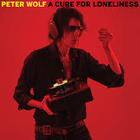
A Cure For Loneliness
- Year:
- 2016
- Tracks:
- 12
- Bitrate:
- 320 kbps
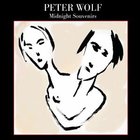
Midnight Souvenirs
- Year:
- 2010
- Tracks:
- 14
- Bitrate:
- 174 kbps
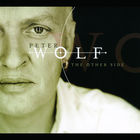
The Other Side
- Year:
- 2003
- Tracks:
- 16
- Bitrate:
- 320 kbps
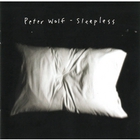
Sleepless
- Year:
- 2002
- Tracks:
- 12
- Bitrate:
- 192 kbps

Fool's Parade
- Year:
- 1998
- Tracks:
- 11
- Bitrate:
- 320 kbps
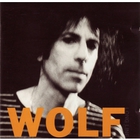
Long Line
- Year:
- 1996
- Tracks:
- 12
- Bitrate:
- 192 kbps
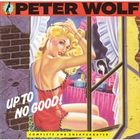
Up To No Good
- Year:
- 1990
- Tracks:
- 11
- Bitrate:
- 192 kbps
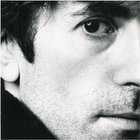
Come As You Are
- Year:
- 1987
- Tracks:
- 11
- Bitrate:
- 320 kbps
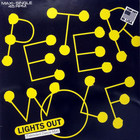
Lights Out (MCD) (Vinyl)
- Year:
- 1984
- Tracks:
- 3
- Bitrate:
- 320 kbps
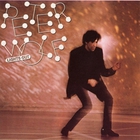
Lights Out
- Year:
- 1984
- Tracks:
- 11
- Bitrate:
- 192 kbps
 Keith Richards
Keith Richards  Little Steven and The Disciples of Soul
Little Steven and The Disciples of Soul  Mick Jagger
Mick Jagger  Mink DeVille
Mink DeVille  Rod Stewart
Rod Stewart  Ron Wood
Ron Wood  Rolling Stones
Rolling Stones  Southside Johnny
Southside Johnny